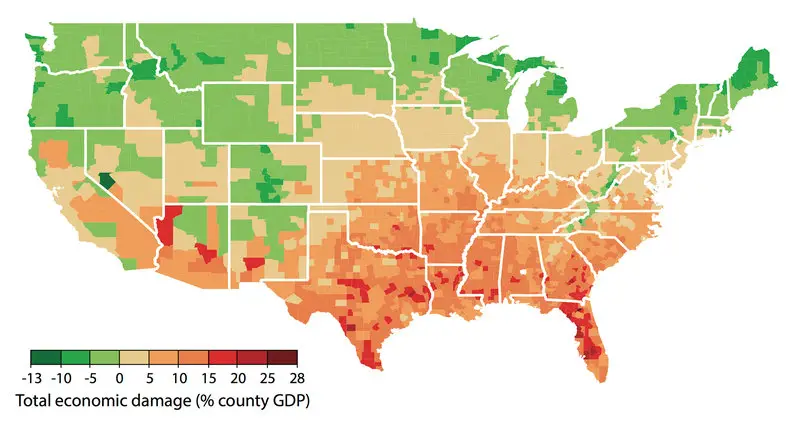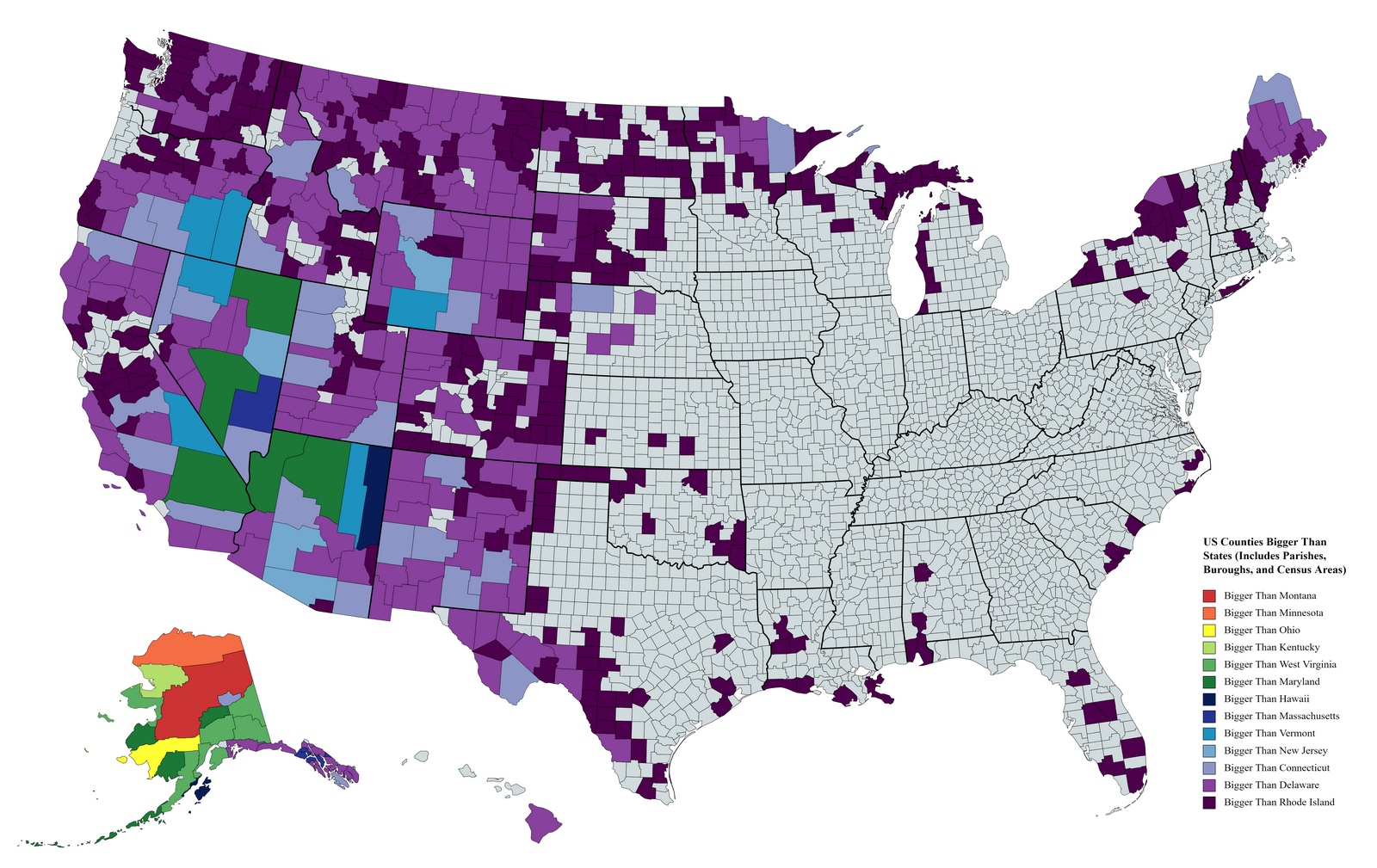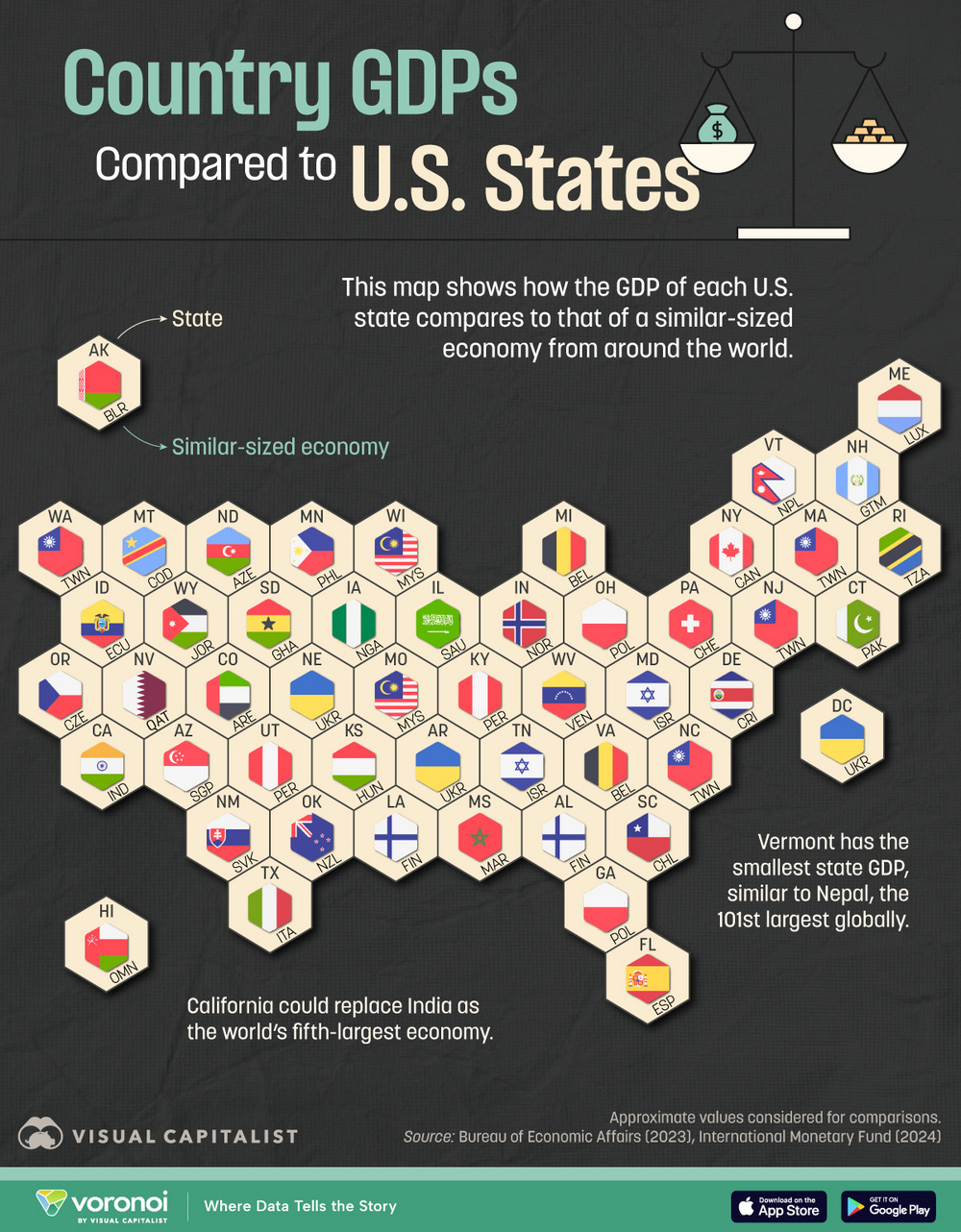Climate Change and the U.S. Economy: A County-and-State Perspective
Climate change is reshaping life as we know it, with profound economic consequences for the United States. How will its impacts vary across states and counties? The answer lies in data-driven projections and insightful maps that illustrate the diverse impacts across the nation. Through maps and data, we can uncover how climate change may reshape both state and county economies.
A Visual Insight Into Economic Impacts by State
One of the most striking maps created by howmuch.net visualizes the estimated changes to each state’s GDP caused by climate change. This map draws from a study published in Science that integrates multiple variables, including shifts in agricultural yields, electricity demand, labor supply, mortality rates, storm surges, and crime rates. These factors are synthesized into an advanced model to estimate state-level GDP changes.
States such as Florida and Texas stand out, with projected losses exceeding $100 billion each. Coastal cities are especially vulnerable due to their exposure to rising sea levels and intensifying storms. For example, Florida’s Tampa Bay narrowly avoided catastrophic damage during Hurricane Irma, highlighting the looming threat. California, known for its recurring wildfires, ranks third with an estimated $59.6 billion loss, followed by New York at $54.7 billion and Georgia at $34.2 billion.
Top 10 States Facing the Greatest Economic Damage:
- Florida: Coastal exposure and hurricane risks –$100.9B
- Texas: Severe storms and heat waves –$100.7B
- California: Wildfires and drought –$59.6B
- New York: Coastal flooding –$54.7B
- Georgia: Storm surges –$34.2B
- Louisiana: Rising sea levels –$21.8B
- North Carolina: Hurricanes –$20.2B
- Tennessee: Heat stress –$19.8B
- Pennsylvania: Infrastructure risks –$18.0B
- Arizona: Heatwaves –$17.4B
While coastal regions dominate the list, interior states are not spared. Rising temperatures intensify droughts, wildfires, and even tornadoes, amplifying risks to infrastructure and local economies.
Economic Impact by Income Decile
Another significant study by ImpactLab delves into how climate change affects counties grouped by income levels. This reveals disparities in vulnerabilities, with lower-income counties often bearing disproportionate economic burdens.

Rural areas and low-income regions, often reliant on climate-sensitive industries like agriculture, may face devastating financial losses, deepening existing inequities. This underscores the need for equitable policies to mitigate such disparities.
A Macro Perspective
Interestingly, a few states exhibit relatively low anticipated impacts. For instance, Vermont, New Hampshire, and Wisconsin report minimal losses, thanks to factors such as geographic positioning and freshwater resources. These “exceptions” highlight the uneven economic burden of climate change across the nation.
However, it’s crucial to approach long-term projections cautiously. As history shows, economic landscapes are susceptible to transformation through innovation and societal shifts. For instance, in the last century, the U.S. economy underwent massive transitions due to technological advancements and global events. The question remains: will the economy adapt to climate change, or will it shrink in response?L
Your thoughts are invaluable! How do you think climate change will reshape the United States’ economic landscape? Share your views in the comments below.








